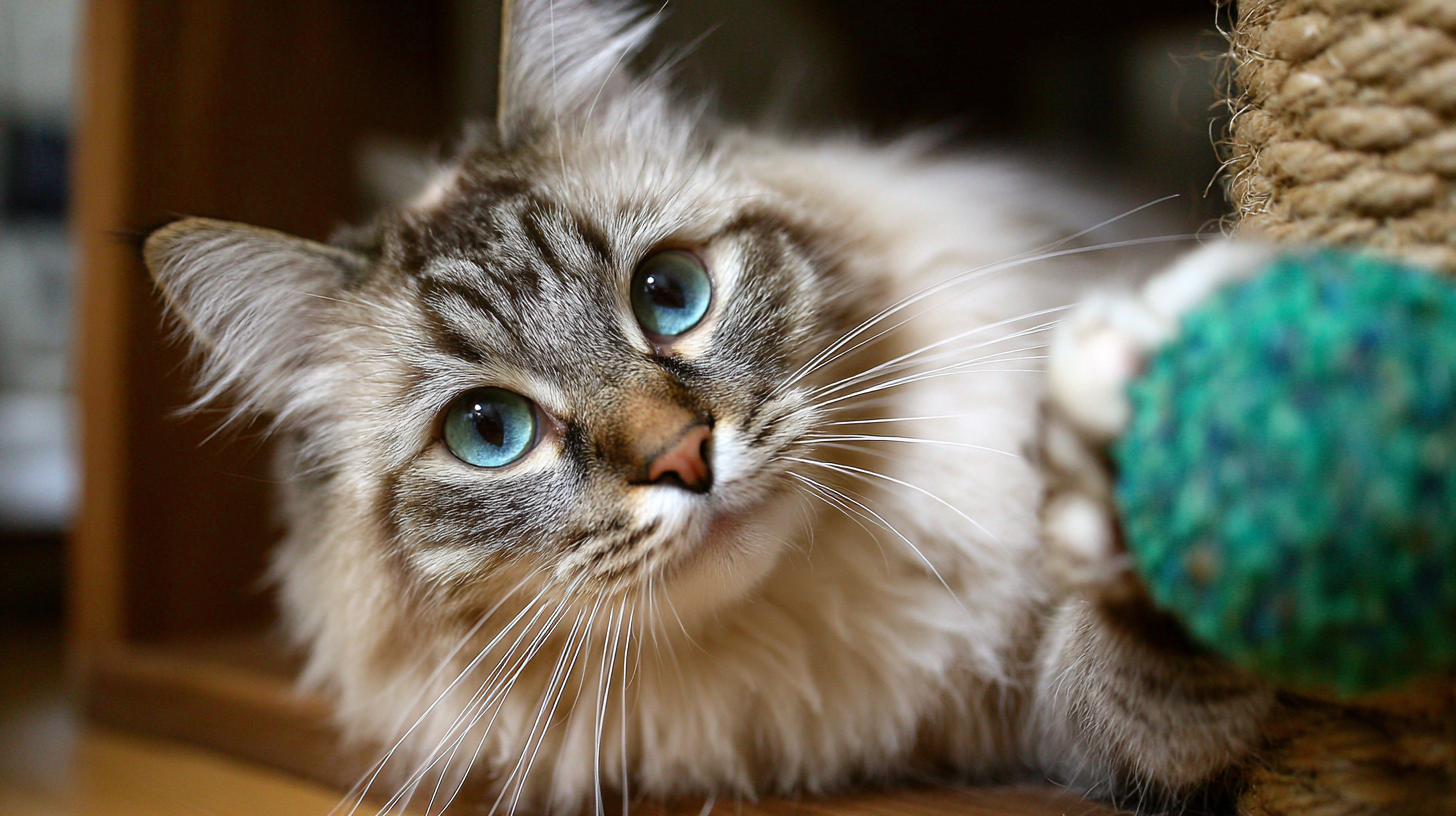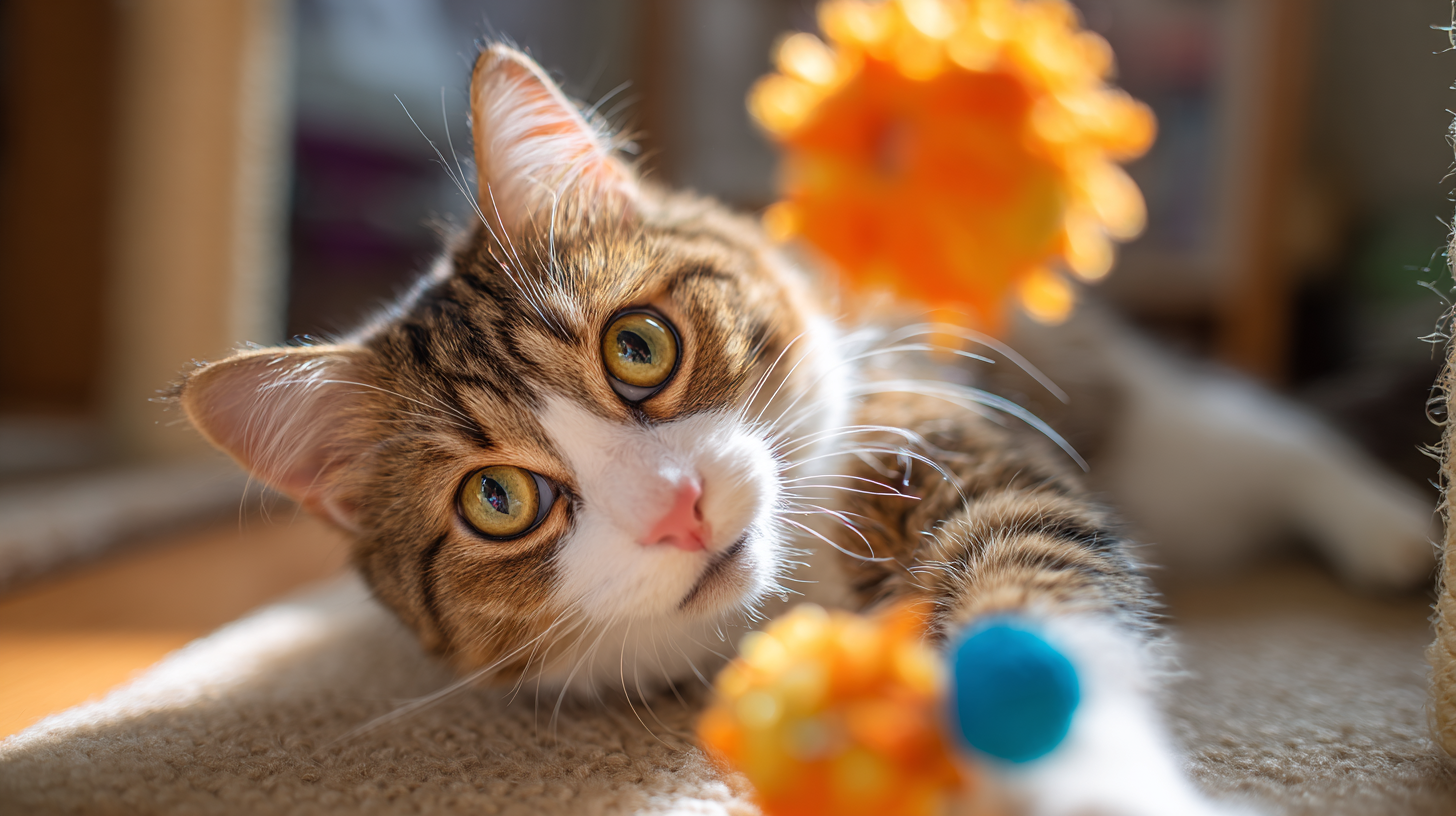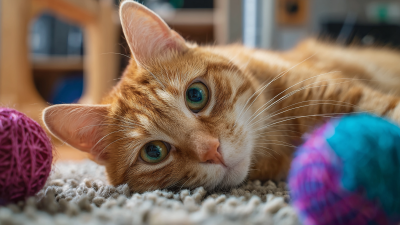Leave Your Message
-
Phone
-
E-mail
The use of Moving Cat Toys has gained considerable attention in the pet care industry due to their potential benefits for feline health and behavior. According to a report by the American Association of Feline Practitioners (AAFP), play is vital for a cat’s physical and mental well-being, with 80% of veterinarians recommending interactive toys to enhance cat-owner bonding and to stimulate feline engagement. Moving Cat Toys mimic the unpredictable movements of prey, which can trigger a cat's hunting instincts, encouraging exercise and reducing sedentary behavior.

A study published in the Journal of Feline Medicine and Surgery highlights that such toys can significantly decrease anxiety and improve social interactions among indoor cats. By providing both entertainment and physical activity, Moving Cat Toys not only serve to enrich a cat’s environment but also contribute to their overall health, making them an essential addition to any cat owner's toolkit.
Cats are natural hunters, and their instincts drive them to be attracted to movement. This is why moving cat toys are so beneficial for our feline friends. Such toys mimic the erratic motions of prey, engaging a cat's predatory instincts. Research indicates that play is critical for a cat's mental and physical health, allowing them to expend energy and maintain optimal weight. Interactive toys not only provide stimulation but also help prevent behavioral issues stemming from boredom or stress.
Automated and motorized cat toys have been shown to keep even the most curious cats entertained. A recent survey noted that toys which stimulate a cat's hunting behavior are among the top rated by both pets and their owners. Owners found that interactive toys, such as moving balls or automated feather wands, could captivate their cats’ attention more effectively than static options. As reported, these toys make it easier for busy pet parents to ensure their cats remain active and enriched, even when they are not at home. By tapping into a cat’s natural instincts, these toys promote a healthier and happier lifestyle for our beloved companions.

Play is a fundamental aspect of a cat's development, significantly influencing their mental stimulation and overall well-being. Research indicates that cats engage in play as a natural instinct, which mimics hunting behaviors that are vital for their cognitive growth and physical fitness. According to a study published in the Journal of Veterinary Behavior, interactive play can help prevent behavioral issues and encourage healthy socialization skills in cats, especially during their formative months. Kittens exposed to stimulating play experiences are more likely to develop into well-adjusted adults, as playtime facilitates the development of critical problem-solving abilities and agility.
The role of play in mental stimulation cannot be overstated. A report from the American Association of Feline Practitioners highlights that indoor cats, who may lack access to natural hunting opportunities, require structured play to meet their instinctual needs. Moving cat toys, such as automated mice or laser devices, not only capture their attention but also encourage them to engage in physically and mentally challenging activities. Engaging with these toys can reduce stress and anxiety, offering a healthy outlet for their energy. Moreover, studies show that regular playtime can enhance a cat's mood, decrease signs of depression, and even improve their lifespan, making it an essential part of feline care.
Moving cat toys serve a dual purpose: they provide entertainment and enhance your cat’s natural hunting instincts. The mechanics behind these toys mimic the erratic movements of prey, triggering your cat's instinctual behaviors. According to a study published in the Journal of Feline Medicine and Surgery, interactive play can significantly increase a cat’s physical activity while simultaneously enhancing their mental stimulation. This engagement is crucial, as indoor cats are particularly susceptible to obesity and boredom-related behavioral issues.
When cats stalk, pounce, and capture moving toys, they practice their hunting skills in a safe environment. A report from the Association for Pet Obesity Prevention indicates that roughly 60% of cats in the U.S. are overweight or obese, which can lead to serious health problems. By incorporating moving toys into your cat's playtime routine, you can help maintain their fitness and sharpen their reflexes, promoting overall well-being.
Tips for maximizing playtime with moving toys include varying the speed and type of toy to keep your cat intrigued. Additionally, consider designating a specific time each day for interactive play to establish a routine, ensuring your feline stays engaged and active.
Interactive toys have become increasingly popular among cat owners, and for good reason. Research shows that these toys not only provide physical stimulation but also cater to the psychological needs of cats. According to a report from the Journal of Feline Medicine and Surgery, engaging in play can significantly reduce stress and anxiety levels in felines. Cats that participate in interactive play exhibit lower cortisol levels, which is directly linked to improved emotional well-being.
Moreover, interactive toys encourage mental stimulation, which is essential for a cat's overall health. A study published by the American Association of Feline Practitioners indicated that cats actively engaged with moving toys showed a 70% increase in exploratory behavior. This curiosity-driven activity not only combats boredom but also mimics their natural hunting instincts, making playtime a psychologically enriching experience. By catering to both physical and mental stimulation needs, moving cat toys can help keep your feline friend happy and healthy, promoting a balanced lifestyle that can lead to increased longevity.
| Dimension | Description | Psychological Benefits | Types of Toys |
|---|---|---|---|
| Engagement | Interactive toys prompt physical and mental stimulation. | Enhances cognitive function and reduces anxiety. | Laser pointers, moving feather toys |
| Physical Exercise | Encourages cats to chase, jump, and pounce. | Helps maintain a healthy weight, reduces behavior problems. | Rolling balls, wands with toys |
| Social Interaction | Toys that can be used with human interaction improve bonding. | Increases feelings of secure attachment. | Toys that require owner participation |
| Mental Stimulation | Promotes problem-solving and exploration. | Reduces boredom and destructive behavior. | Puzzle feeders, toys with hidden treats |
When selecting moving cat toys, it’s essential to consider your feline friend’s instincts and preferences. Cats are natural hunters, and toys that mimic the unpredictable movements of prey can stimulate their innate hunting skills. Look for toys that offer erratic motions, such as those that dart, spin, or flicker. Interactive feather wands or laser pointers can also provide an engaging challenge, encouraging your cat to chase and pounce, which promotes physical activity and mental stimulation.
Moreover, the material and design of the toys play a crucial role in their effectiveness. Opt for durable toys that can withstand rough play, as well as those with enticing textures and sounds. Soft, plush toys may appeal to a cat's instinct to carry or nibble, while those with built-in sound features can intrigue their curiosity. Always consider the size of the toy; it should be appropriate for your cat’s age and size to ensure safe play. By carefully selecting the right moving toys, you can create a stimulating environment that encourages healthy play behavior, keeping your cat active and happy.







